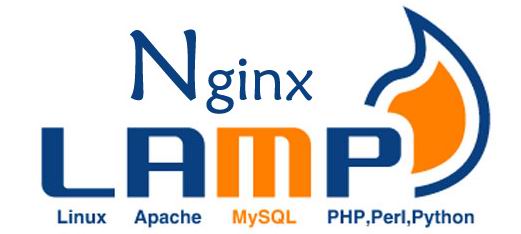
LNMPA represents the web server architecture of Nginx, MySQL, PHP, and Apache under Linux. Unlike the previous LNMP, Apache support was added. The use of Nginx as a front-end service can be faster and more timely, static pages, JS, pictures, and so on. When the client requests access to dynamic pages, the reverse proxy of Nginx handles Apache, and the Apache is processed and then returned to the client by Nginx.
[LNMPA installation]
first, we need to install LNMP. I don't say this in detail. The following list is:
[code]#wget -c http://soft.vpser.net/lnmp/lnmp0.7.tar.gz
then wait for the installation to complete. After that, we can install./eaccelerator.sh and./ionCube.sh components. Next, start installing Apache, very simple, with only one command:
[code]#./apache.sh[/code]
, still waiting for the system to compile automatically. After we finish, we can open the default page.
[LNMPA]
for Zhao Ronglai, I think the greatest convenience brought by Apache is that it can be directly supported by.Htaccess files without having to bother with pseudo static rules.
add virtual host: /root/vhost.sh
delete virtual host: RM /usr/local/nginx/conf/vhost/ domain name.Conf also needs: RM /usr/local/apache/conf/vhost/ domain name.Conf
LNMPA state management: Tc/init.d/nginx {start|stop|reload|restart}
PureFTPd state management: /etc/init.d/pureftpd {start|stop|restart|kill|status}
MySQL state management: /etc/init.d/mysql {start|stop|restart|reload|force-reload|status}
Apache state management |graceful|graceful-stop|configtest|status}
Nginx master configuration file: /usr/local/nginx/conf/nginx.conf
MySQL configuration file: /etc/my.cnf
PHP configuration file: /usr/local/php/etc/php.ini
PureFtpd configuration file: / Usr/local/pureftpd/pureftpd-mysql.conf
Apache configuration file: /usr/local/apache/conf/httpd.conf
LNMPA upgrade PHP version:./upgrade_lnmpa_php.sh (Note: in LNMP directory execution)
[miscellaneous disease and use skills]
chown -R www:www /home/ (Web site directory)
2.64bit system installed LNMP, hint that the database password error can not be managed?
execute the script below to reset the password.
[code]wget http://soft.vpser.net/lnmp/ext/reset_mysql_root_password.sh; SH reset_mysql_root_password.sh[/code]3.Mysql
disable log
in /etc/my.cnf
annotate these two lines The number of processes
in the /usr/local/nginx/conf/nginx.conf file
generally do not have to be modified. If your VPS gives you a dual core, you can modify the number of worker_processes values for the 2
5. modified php-cgi process number
modify the number of processes. Conf
Modify.Lt; value name=.quot; max_children.quot;.Gt; 12.lt; /value.gt; general 256M memory can be set to 12
linux with new default is only 1024. As a server with larger load, it is easy to encounter error: too many open files. Therefore, it needs to be changed.
can be modified immediately using ulimit -n 65535, but it is invalid after restart. (ulimit -SHn 65535 equivalent ulimit -n 65535, -S refers to soft, -H refers to hard)
there are the following three modifications:
The following two lines record
* soft nofile 65535
* hard nofile 65535
which kind to use, try which is effective, CentOS in first ways without effect, use third ways to have effect, and use second kinds of effects in Debian.
7. changes the SSH default port
Edit /etc/ssh/sshd
the default is 22 recommended to modify
to ensure that you can't make a SSH login after it is not modified, it is suggested to add a port number first, after confirmation can be connected, then delete the 22 port (Debian system is: Debian system is: Debian system is:) />8. modifies the ROOT password (of course, this step can be done directly in the SolusVM background)
login to SSH with ROOT account, and then enter passwd and then enter two new password
recommended to be set to more than 9 digits, and the English digital character combination
this article comes from the Zhao Rong tribe Ref= "http://www.zrblog.net" >www.zrblog.net, please indicate the source: http://www.zrblog.net/3616.html